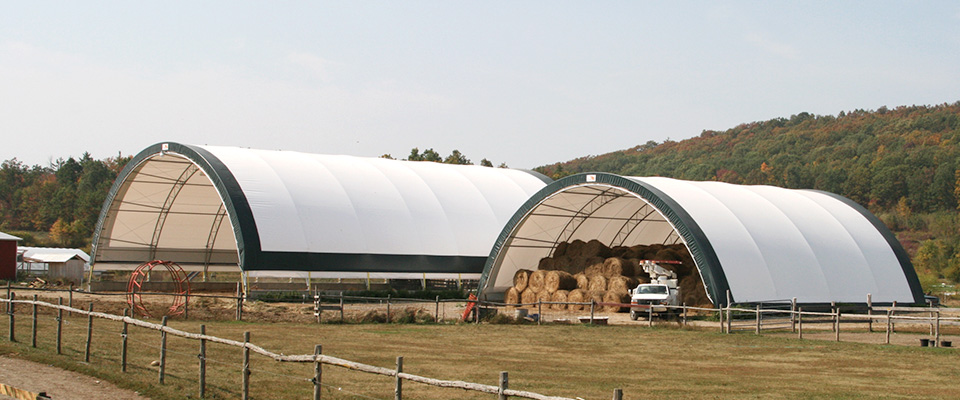How to Avoid Hay Fires This Summer
June 19, 2018
This time of year, most farmers have finished putting up their first cutting of hay. Preventing household or electric fires is generally common knowledge, however, hay fire prevention isn’t as intuitive as one might assume. Not only can wet hay catch on fire, but the leading cause of hay fires is, in fact, moisture. That’s why it’s imperative for hay to be completely dry and contain less than 20 percent moisture prior to baling.
To minimize the risk of fire, farmers must ensure that hay is as dry as possible from the very beginning of the baling process, to after hay is baled and stowed away. Seizing every opportunity to ensure dryness, as well as regularly monitor hay temperature, are two of the most important habits that a farmer can develop.
Timing and weather both help ensure that hay stays dry early in the process of haymaking. Hay should be mowed in the morning and then set out to dry in the field for at least an entire day. The best time for haymaking is on a slightly windy day with a humidity level of 50 percent or lower.
Most hay fires occur within six weeks after bailing and can happen in stacks, loose hay and bales of any size. If hay is baled at moisture levels over 20 percent, heat-releasing bacteria raise temperatures up to 140 degrees. Hay at this temperature is not a problem yet, but it must be monitored to make sure that temperatures don’t climb higher. Continued bacterial growth will push temperatures upward into the danger zone.
Hay Temperature and the Corresponding Threat of Fire
|
Below 130° |
No Action Needed |
|
130° to 140°F |
No problem yet, temperature may go up or down. Recheck in a few hours. |
|
150° |
Hay is entering the danger zone. Temperature will most likely continue to climb. Disassemble stacked hay bales to promote air circulation. |
|
160° |
Hay is in the danger zone. Check hay temperature every couple of hours. Disassemble stacked hay to promote air circulation in the presence of the fire department. |
|
175° |
Hot pockets or fire pockets are likely. Call the fire department and report a possible hay fire incident. Close barns tightly to eliminate oxygen. |
|
190° |
Fire is imminent and bales may burst into flames. With the assistance of the fire service, remove hot hay. |
|
200°+ |
A fire is likely to occur. Inject water to cool down hotspots before moving hay. Remove hot hay with the help of the fire department. Keep tractors wet and fire hose lines charged in the barn and along the route of where bales will be stacked. Have a charged hose ready to control blazing. |
Checking Hay Temperatures
Checking hay temperature is risky business, so it should always be at least a two-person job. While one person stands on top of the bales to get the temperature reading, the other person can observe and be ready to act in case of an emergency. The one checking the temperature should wear a harness and a lifeline attached to something secure. In case the hay bursts into flames, the observer can pull the person away from the fire.
Hay temperatures should be taken with a commercial thermometer in the center of the stack. In large hay stacks, this is about eight feet down from the top. Continue taking hay temperatures twice daily for six weeks if the moisture content was too high at the time of baling.
Keeping Hay Dry
There are a number of tools and accessories that help increase hay drying rates, such as tedders, windrow inverters, hay rakes and conditioning equipment. Tedders and inverters use moving forks to fluff hay around to promote drying. Hay rakes narrow the swath for the baler, while hay conditioners crush newly cut hay to encourage fast drying. Another useful drying accessory is propionic acid, a hay preservative that slows or reduces bacteria growth and mold. It’s applied on hay with moisture content between 16 and 20 percent.
Hay storage areas, whether they are large barns or small shacks, ought to be sealed against the rain and wind. Drainage should also be present so water can’t get into the structure. Outdoor hay should be covered with a waterproof material or arranged to allow for air circulation. Keeping hay bales on top of pallets or tires is also a smart way to protect hay from moisture on the ground.
Hay fires can set farmers back thousands or even millions of dollars. By following these preventive measures before, during and after baling, farmers can protect their barns, livestock, feed supplies and themselves from potential disaster.

